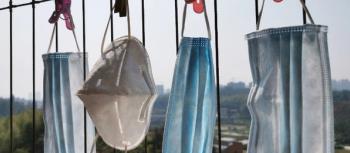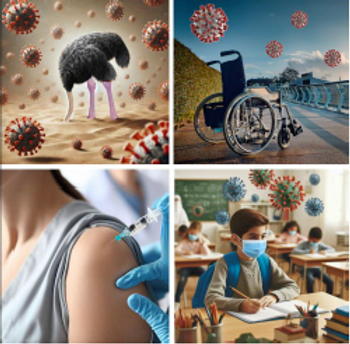
Have We Gone Overboard in Trying to Protect Healthcare Workers?
"Those of us who must go out into the world and have contact with people don’t have to panic if we find out that someone with the coronavirus has been in the same room or stood closer than we wanted for a moment."
The news is grim for infection preventionists (IPs), hospital administrators, environmental services staff and everybody else on the frontlines fighting COVID-19. As Infection Control Today® reports, the list of concerns keeps growing. There’s the revelation that SARS-CoV-2, the virus that causes COVID-19, can stay on surfaces that haven’t been disinfected
However, a silver lining appears in this storm in an article by 1 of the most respected healthcare writers and experts in the world. Atul Gawande, MD, writes in the
Gawande researched how this played out in Hong Kong and Singapore. The healthcare workers in those 2 cities practice the widely accepted guidelines, including hand hygiene, the wearing of regular surgical masks and gloves. Social distancing is practiced, even in waiting rooms where chairs are place 6 feet apart. Patients exhibiting COVID-19 symptoms or who’ve traveled from hot spots are separated from other patients and placed in separate respiratory wards.
It all sounds familiar.
“What’s equally interesting is what they don’tdo,” Gawande writes. “The use of N95 masks, face-protectors, goggles, and gowns are reserved for procedures where respiratory secretions can be aerosolized (for example, intubating a patient for anesthesia) and for known or suspected cases of COVID-19. Their quarantine policies are more nuanced, too. What happens when someone unexpectedly tests positive-say, a hospital co-worker or a patient in a primary-care office or an emergency room? In Hong Kong and Singapore, they don’t shut the place down or put everyone under home quarantine.”
Instead they retrace the infected person’s steps and quarantine only those who’ve been in close contact with them.
“In Hong Kong, ‘close contact’ means fifteen minutes at a distance of less than six feet and without the use of a surgical mask; in Singapore, thirty minutes,” Gawande writes “If the exposure is shorter than the prescribed limit but within six feet for more than two minutes, workers can stay on the job if they wear a surgical mask and have twice-daily temperature checks. People who have had brief, incidental contact are just asked to monitor themselves for symptoms.”
These measures have helped flatten the COVID-19 curve in both places and prove that the disease can be managed by healthcare workers following standard infection prevention protocols. Gawande writes that “extraordinary precautions don’t seem to be required to stop it. Those of us who must go out into the world and have contact with people don’t have to panic if we find out that someone with the coronavirus has been in the same room or stood closer than we wanted for a moment. Transmission seems to occur primarily through sustained exposure in the absence of basic protection or through the lack of hand hygiene after contact with secretions.”
Newsletter
Stay prepared and protected with Infection Control Today's newsletter, delivering essential updates, best practices, and expert insights for infection preventionists.





